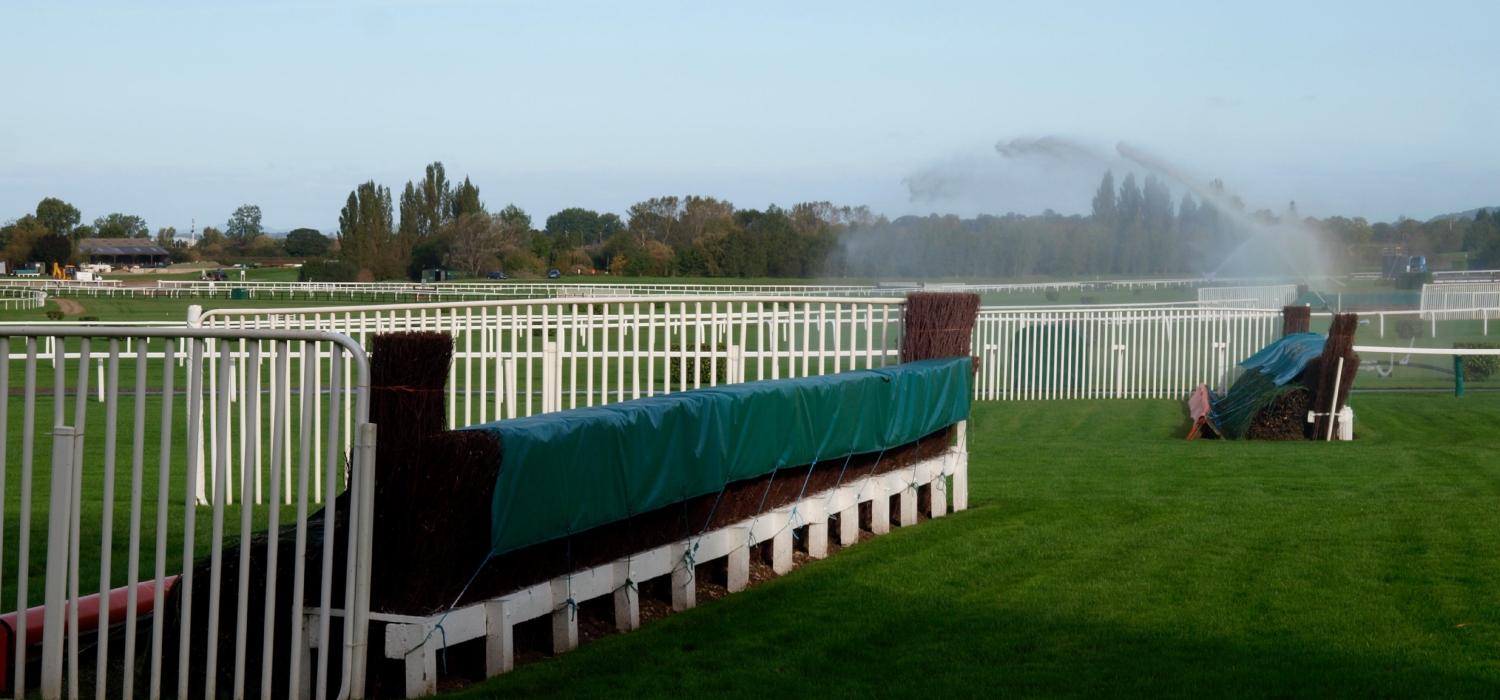
Cheltenham Trends expert Matt Tombs is here one final time to look at the hurdle and chase courses in recent years…
Check out Matt Tombs’ other articles in this series below:
Handicap entries close today – on @TeamMatchbook Insights I look at:
1. Disparity between British / Irish marks – hurdles vs fences
2. Impact of BHA dropping horses more quickly
3. New Pertemps qualifying rules
4. Novices needing 4 runs in to qualifyhttps://t.co/SlKlEDYN3P
— Matt Tombs (@thespieler) February 21, 2023
Is Cheltenham now a ‘dual-purpose’ course?
In the final Festival Insights column this year I’m posing a question that I suspect few racing fans have considered, (and my answer to which may be controversial!)
From the point of view of the ground, is Cheltenham now equivalent to a ‘dual-purpose’ course and if it is, how should we amend our punting strategy?
A dual-purpose course is one where both flat and jumps racing occur. The big consequence for jumps racing is watering on the flat track in the summer.
Since it is much easier to move hurdles than fences, the flat and hurdles tracks tend to be mainly on the same grass, with the chase track separate.
At jumps meetings at dual-purpose courses like Sandown or Leicester, there is often a vast difference between the going on the hurdle and chase tracks – because the water table is so much higher on the hurdles track from the summer watering.
For example, at Sandown on Tingle Creek day in December, it’s not uncommon for the ground to be heavy on the hurdles track and a mixture of soft and (in the back straight) good to soft on the chase track. This season the ground was soft on the hurdles track yet they were watering the chase track.
As a jumps-only track, this used to have no relevance to Cheltenham. Even when the watering programme really began for the Festival nearly 20 years ago, it was watering on both the Old and New Courses as needed – shortly before or during the Festival.
This watering was originally to prevent good-to-firm ground, (but increasingly has been to provide slower and slower ground.)
Watering was introduced as the drainage system was sucking moisture out of the ground, (it had been installed to reduce the chances of testing ground in an era when good ground was deemed a good thing and testing ground a bad thing).
The strategy was to reduce the impact of nature via a mixture of the drainage system and watering.
Of the 10 Festivals between 2008-17, 7 started on good to soft, 2 on good and 1 on soft so it could be argued that it was successful.
During that period, it was increasingly deemed necessary that if the winter had been dry so that the Festival would begin on good ground, it would need to have been watered, (so there was no question of it being good to firm.)

Equally, when there had been little or no watering because the winter had been wet – the ground had to be called good to soft because if it were termed good, questions would be asked why no watering had occurred.
The further back you go the less accurate race times are but, accepting that context, Jezki broke Istabraq’s course record in 2014 on good to soft ground, (albeit carrying 11-10 not 12-0) and Annie Power was slightly quicker again on good to soft in 2016, (carrying 11-3).
In 2011 & 2012 (the last 2 occasions the Festival began on officially good ground,) the Champion Hurdle times were about 8 and 5 seconds slower than in 2014 & 2016.
The (watered) good ground produced slower times than the (unwatered) good to soft ground.
The reason, which is essential now, may have been the height of the water table. This phenomenon was first really debated after the 2000 Festival, (which was pre-watering.)
The winter had been unusually wet, and then the run-up to the Festival unusually dry.
The times were incredibly fast on the Old Course, and there was much debate about the race distances run.
Whatever the truth about the distances, it was argued that this was the ‘trampoline effect’, the goldilocks scenario of:
- There being little moisture on the top of the ground to slow horses down
- But the high water table causing there to be so much bounce in the ground that jumps horses let themselves down on it (in a way they won’t on firmer ground)
Consequently, they ran very fast times – and horses that had been winning on soft or heavy ground during the winter were still winning.
Of course, it didn’t suit out-and-out mudlarks, but it wasn’t the sort of ground that only good ground horses could perform on.
With that impact of the water table in mind, the crucial change in the last few years is that there is a lot more watering in the autumn.
This being the year 1923 (sic), we still don’t have accurate information on how much watering occurs.
But, John Pullin said in the autumn that they’d put half a metre of water onto the Old Course before the October meeting alone. A lot more was put on before the November meeting.
By contrast, the New Course isn’t used until December, and although water was put on it this season because it remained dry, my guess is that it was only a fraction of what was put on the Old Course.
Given the desire to water the Old Course for the autumn meetings, especially for the October meeting to try and make it for ‘winter horses’, Cheltenham may now be becoming a dual-purpose course like Sandown – albeit the split isn’t between hurdles and chase tracks. It’s between the Old and New Courses.

 Join Now
Join Now
The 2022 Festival was arguably an illustration of this.
After a relatively dry run up to the Festival, on the opening day, the ground was officially good to soft, but Constitution Hill broke the course record (carrying 11-7).
Of the Tuesday winners:
- Constitution Hill had won a Grade 1 on heavy ground during the season.
- Edwardstone had won a Grade 2 on soft.
- Maries Rock & Brazil had both won on soft during the season.
- The other 3 winners on the day, Corach Rambler, Honeysuckle & Stattler, had all won on heavy ground earlier in their careers.
The quick times weren’t favouring fast ground horses, so was it the trampoline effect in play and conditions were what a few years ago were called ‘perfect jumping ground’?
The high water table (from artificial irrigation) on the Old Course also means that a much smaller amount of rain turns the ground deeper much quicker than it used to.
Last year, they watered after the first day. It rained most of Wednesday, and the ground was dreadful.
A few hours after the rain stopped, racing began on Thursday on the New Course, albeit on fresh ground.
Although officially soft, it looked more good-to-soft and, on the chase course, with some good ground mixed in.
Allaho won the Ryanair in an official time only 1.7 seconds above standard, (0.3 seconds slower than his winning time on officially good to soft ground the previous year.)
That’s about 0.5% above standard. The previous day a similar level horse, Energumene, won the Champion Chase in a time nearly 6% above standard.
The fresh ground and the fact it had stopped raining for about 18 hours before the Ryanair played a part, (as the relative tempo of the 2 races will always do too).
However, I think the vastly different amounts of watering of the Old & New Courses during the season were responsible for a fair chunk of that percentage difference.
This history gives us the context for the new reality on the Old Course. The last 5 Supremes have been run on ground that was officially:
- 2018 – Heavy
- 2019 – Soft
- 2020 – Soft
- 2021 – Soft
- 2022 – Good to Soft
4 of the 6 times the Supreme has been run on soft or worse this century have come in the last 5 years.
Part of this is just weather over a small sample of years – it’s rained more in the immediate run-up to the meeting. (In the longer term, climate change is likely to alter the natural state of the going but the impact of climate change as looked at in only the last 5 years doesn’t account for the going we’ve had.)
This suggests that autumn watering is a significant factor. The artificially high water table magnifies the impact of rain just before the meeting.

So as we go into ‘weather-watch’ mode, what do we need to consider?
Scenario One
The one we had 4 years in a row between 2018-21: it rains/snows in the run-up to the meeting, and the ground is soft or heavy depending on how much precipitation there is.
Crucially, the artificially high water table on the Old Course means a smaller amount of precipitation now has a bigger impact.
Scenario Two
It’s wet enough during the winter that even though it is then dry on the run-up – little if any, watering is needed.
We get the sort of good-to-soft ground we had on Tuesday last year, where there are fast times and soft-ground horses still win.
Arguably, that’s not because the ground is good to firm as some classed it last year; it’s the trampoline effect.
Scenario Three
It’s pretty dry in the month or two before the Festival.
Even with the autumn watering, a lot more watering is done in the run-up to the Festival.
Whilst these days, they will happily call watered ground officially good to soft, rather than officially good – the outcome could be similar to 2011 & 2012.
With a dry forecast, the watering has already begun.
If it stays dry, we’ll probably be in Scenario Three. But it wouldn’t take much rain/snow just before the meeting to leave us in Scenario One. Scenario Two looks less likely on the Old Course this year.
I expect the markets to be based on watering just about providing good to soft ground.
If it stays dry, my guess is the Old Course will ride slower than the market expects, (a cynic might anticipate pressure from certain individuals to this effect.)
Additionally, punters need to have a list of horses for the first 2 days who like the mud, as it won’t take much rain/snow in the last few days before the meeting to make the ground really testing.
The flip side of this principle is that New Course is like the chase track at a dual-purpose course such as Sandown – so if the ground rides soft (or heavy) on the Old Course in Scenario One, prepare for it to ride quicker than you’d expect on the New Course, (because of the lower water table).
Don’t get sucked into the plunges on mudlarks like the one on Royal Kahala in the Stayers Hurdle last year.








